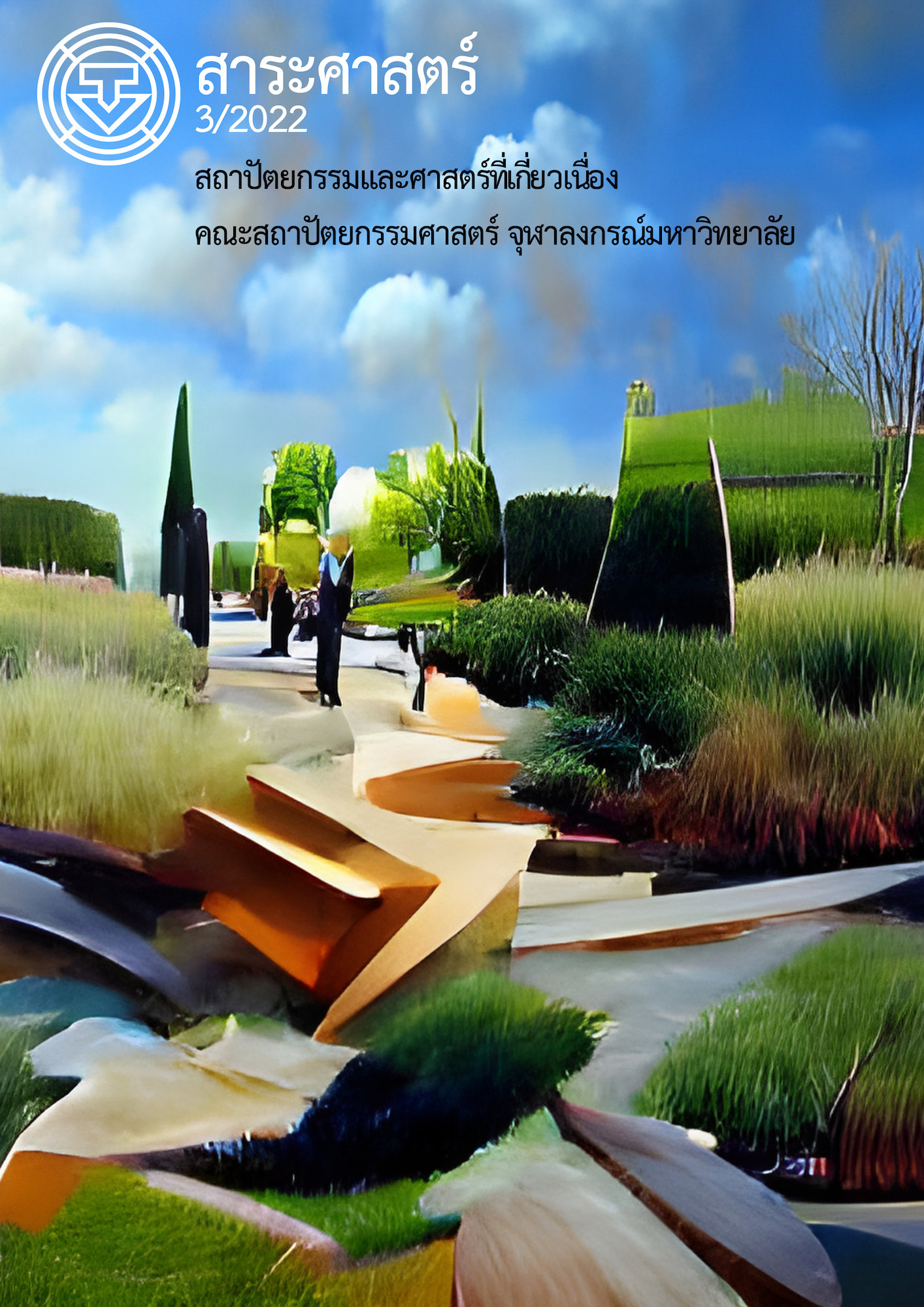Potential of Community and Housing Development in Lamchang Community to Comply with Creative Innovation District under Smart City Plan
Main Article Content
Abstract
In 2019, the government announced regional urban development policies according to the National Strategic Plan for determining Chiang Mai to be developed as a smart city to drive economic growth and improve people's quality of life. There are a total of 26 communities in the old city of Chiang Mai that have been designated as creative innovation districts. The results of the assessment of the composition of the creative district revealed that the “Lam Chang” community has the most potential for further development into an innovation district. The objective of this study is to assess the potential of the community by studying the physical, economic, social situation, needs, and attitudes of residents in the community and housing development to be in line with the smart city development plan. This study has specific methods including collecting data from the survey data analysis through geographic information systems, in-depth interviews, and mapping for all two action group meetings which mainly focus on participatory research. The results showed that the “Lam Chang” community has a high potential for development under the policy because its’ history of being the oldest trading community. Within the community, there are suitable for being a residential and workplace also have a temples, markets, and schools as the centers of the community which make the people in the community have high cooperation. The resources within the community are managed through the organization, committees, and also have a community’s enterprises. The houses in the “Lam Chang” have been modified to serve as a business activities. Most of them are adapted to accommodate tourists. However, The results of the workshop found that Community must be developed to be consistent with the policy plan in a practical way based on the existing assets and develoe a guidelines to promote new forms of activities and income consistent with the physical development. Last, Networking among communities, organizations, governments, and institutions is necessary to promote a fundraising.
Article Details
References
ณัฏฐวุฒิ ทรัพย์อุปถัมภ์. (2558). ทฤษฎีและหลักการพัฒนาชุมชน (Theory and Principle of Community Development). จันทบุรี: คณะมนุษยศาสตร์และสังคมศาสตร์ มหาวิทยาลัยราชภัฏรำไพพรรณี.
ดุษฎี ทายตะคุ. (2551). เอกสารคำสอนวิชา การวางผังเมือง : กลยุทธ์การพัฒนาและอนุรักษ์เมือง. กรุงเทพฯ: คณะสถาปัตยกรรมศาตร์ จุฬาลงกรณ์มหาวิทยาลัย.
พรสรร วิเชียรประดิษฐ์. อาจารย์ประจำภาควิชาการวางแผนภาคและเมือง คณะสถาปัตยกรรมศาสตร์ จุฬาลงกรณ์มหาวิทยาลัย. (2564, 18 พฤศจิกายน).สัมภาษณ์.
สถาบันวิจัยสังคมมหาวิทยาลัยเชียงใหม่. (2562). เชียงใหม่เมืองหัตถกรรมสร้างสรรค์. สืบค้นเมื่อ 9 ธันวาคม 2564, จาก https://www.creativecitychiangmai.com/articles/เชียงใหม่เมืองหัตถกรรม/
สมชาย เกตุรัตนมาลี. (2552). ศักยภาพในการพัฒนาที่อยู่อาศัยของผู้อยู่อาศัยย่านเมืองเก่า : กรณีศึกษาชุมชนนางเลิ้ง กรุงเทพมหานคร. (วิทยานิพนธ์ปริญญามหาบัณฑิต, จุฬาลงกรณ์มหาวิทยาลัย).
สมศักดิ์ ศรีสันติสุข. (2537). สังคมวิทยาชุมชน : หลักการศึกษาวิเคราะห์และปฏิบัติงานชุมชน. ขอนแก่น: มหาวิทยาลัยขอนแก่น.
สำนักงานจังหวัดเชียงใหม่. (2564). แผนยุทธศาสตร์การพัฒนาเมืองอัจฉริยะ (Chiang Mai Smart City Strategy Plan). เชียงใหม่: [ม.ป.ท.].
สำนักงานนวัตกรรมแห่งชาติ. (2565). เชียงใหม่เมืองนวัตกรรม. สืบค้นเมื่อ 4 เมษายน 2565, จาก https://www.nia.or.th/pacpodcast-ep24-ChiangMai-InnovationCity
สำนักงานส่งเสริมเศรษฐกิจสร้างสรรค์. (2562). ย่านสร้างสรรค์เชียงใหม่ (Chiang Mai Creative City). สืบค้นเมื่อ 9 เมษายน 2565, จาก http://resource.tcdc.or.th/ebook/Chiang.Mai.Creative.City.pdf
สุริยานนท์ พลสิม. (2561). นิยาม องค์ประกอบ ดัชนีชี้วัด และผลลัพธ์แห่งการเป็นเมืองอัจฉริยะ (Understanding Smart City). ขอนแก่น: วิทยาลัยการปกครองท้องถิ่น มหาวิทยาลัยขอนแก่น.
สุวารี วงศ์กองแก้ว. ผู้อำนวยการเครือข่ายหอศิลปวัฒนธรรมเมืองเชียงใหม่ และหัวหน้ากลุ่มงานการส่งเสริมพัฒนาเมืองเชียงใหม่ เทศบาลนครเชียงใหม่. (2564, 16 พฤศจิกายน). สัมภาษณ์.
The JRC of the European Commission. (2019). The cultural and creative cities monitor.Luxembourg: Publications Office of the European Union.
Katz, B. & Wagner, J. (2014). The rise of innovation districts: A new geography of innovation in America. Washington: Brookings Institute.
OHCHR/UN-Habitat. (2008). Fact sheet on the right to adequate housing. Geneva: United Nations.


